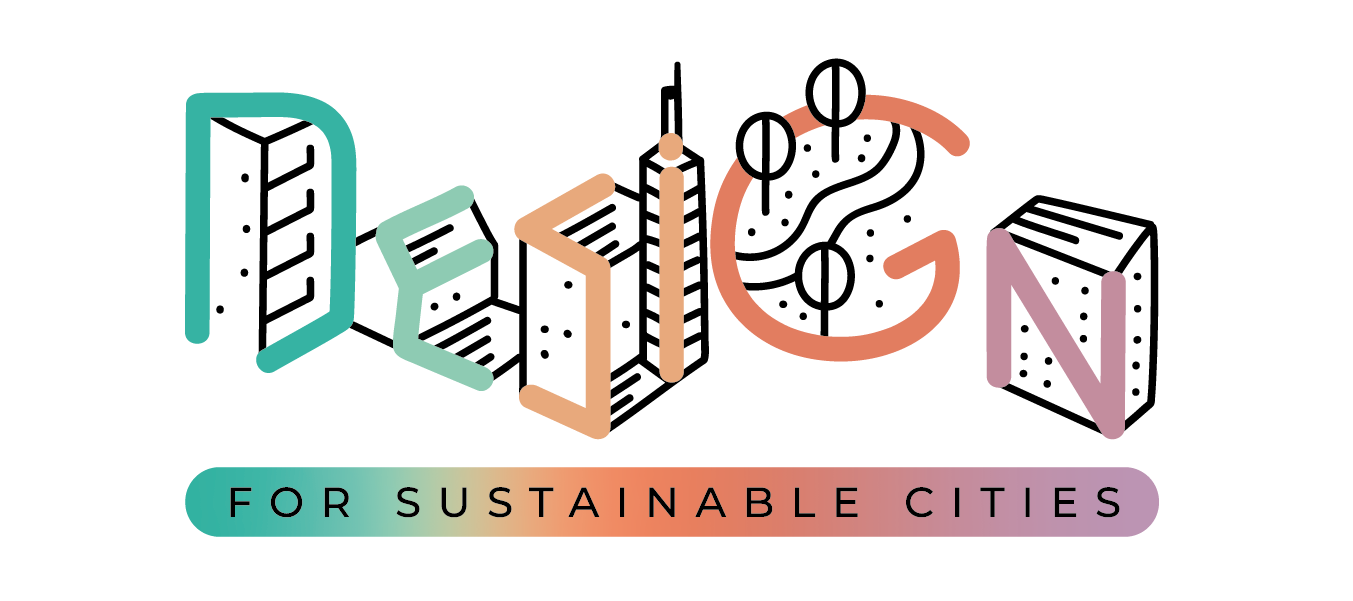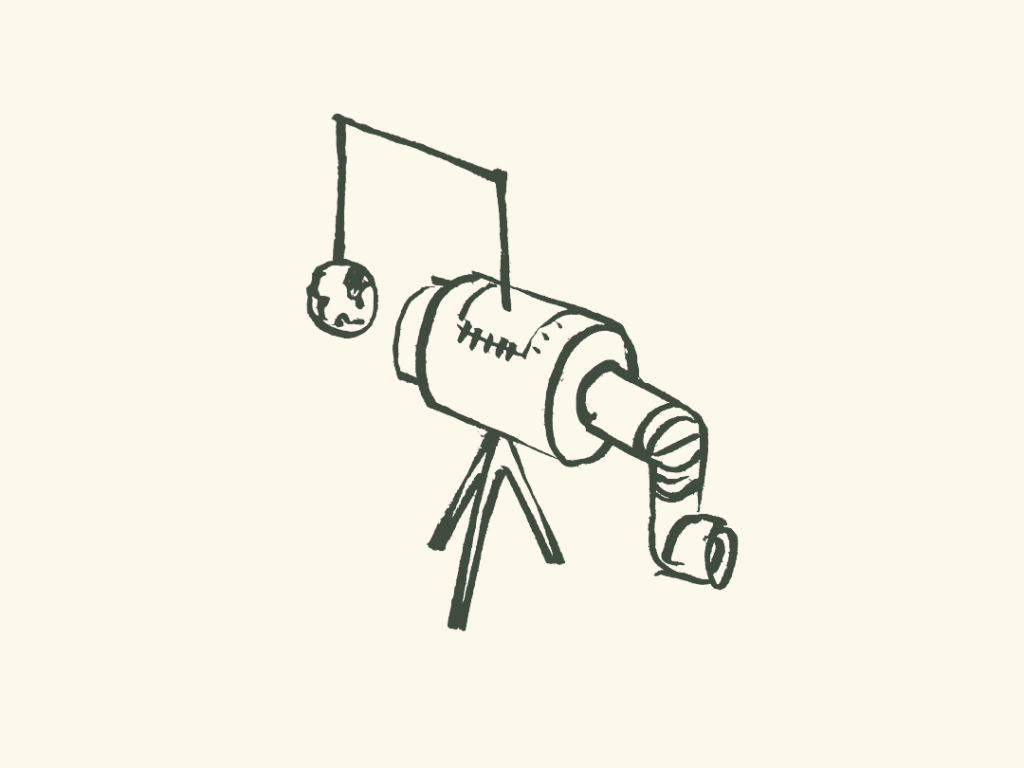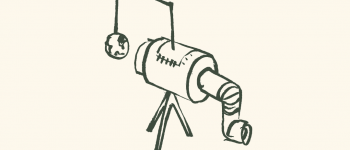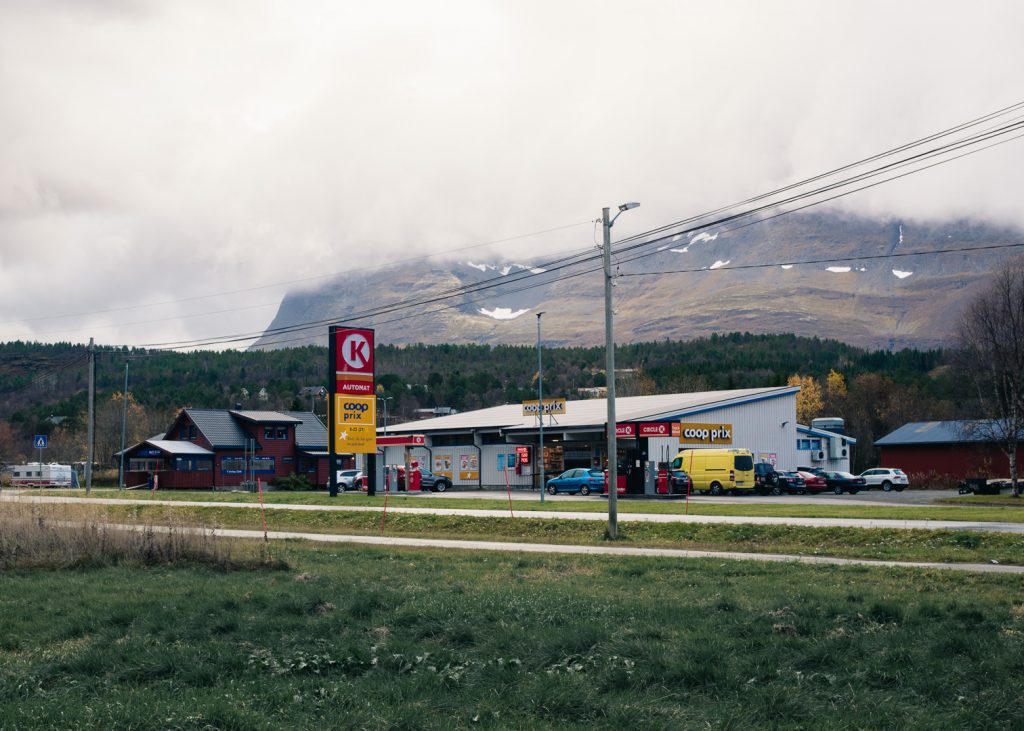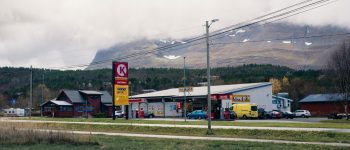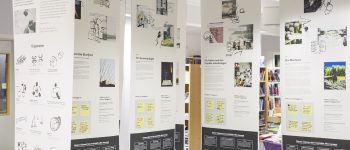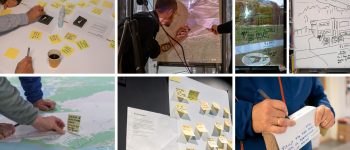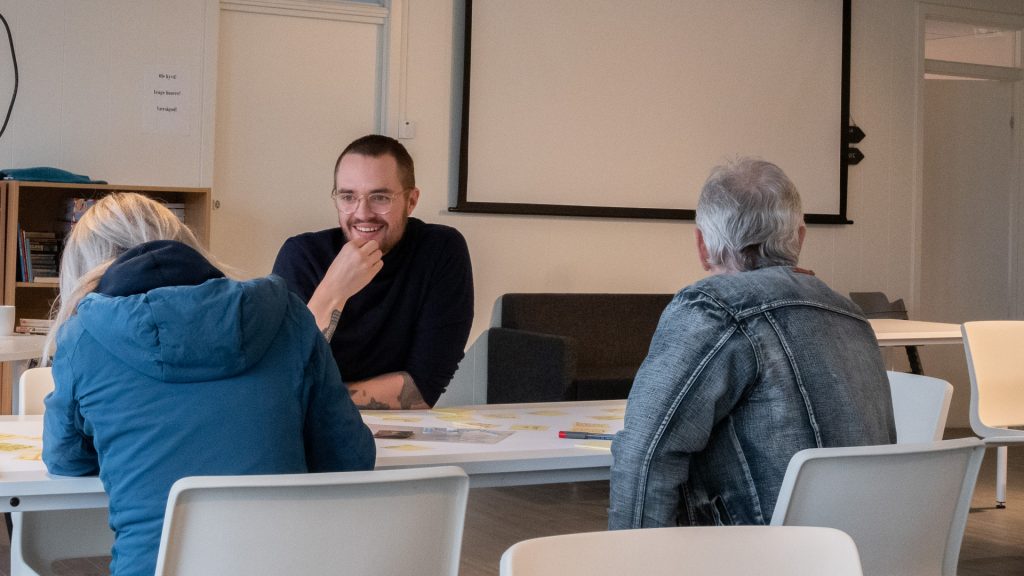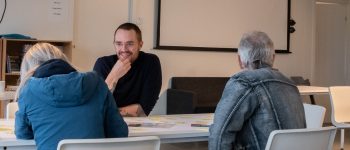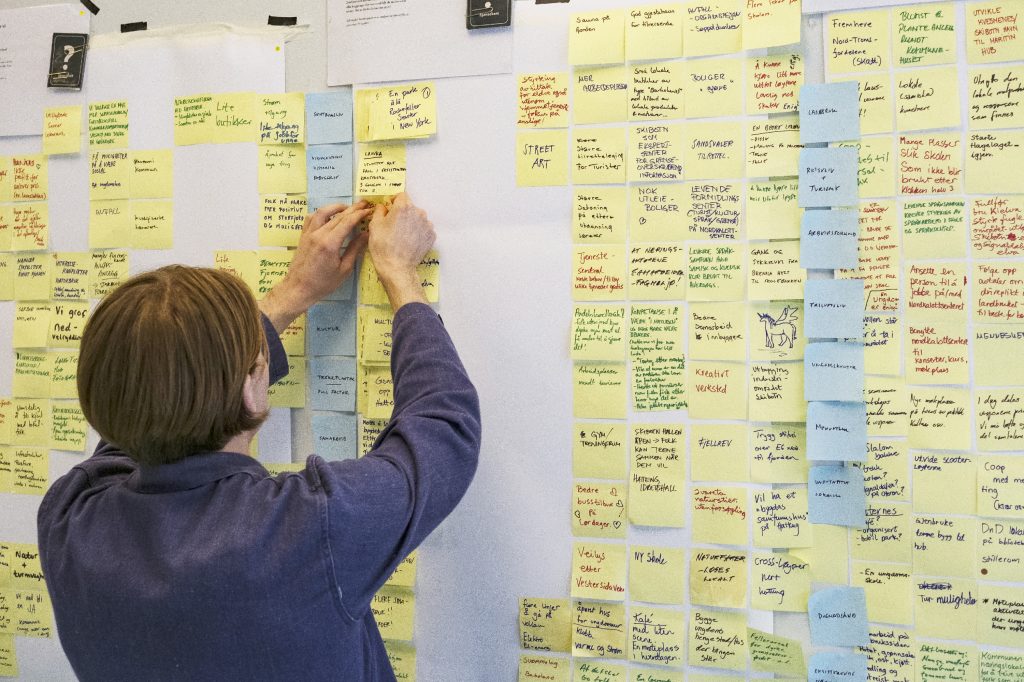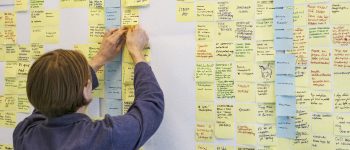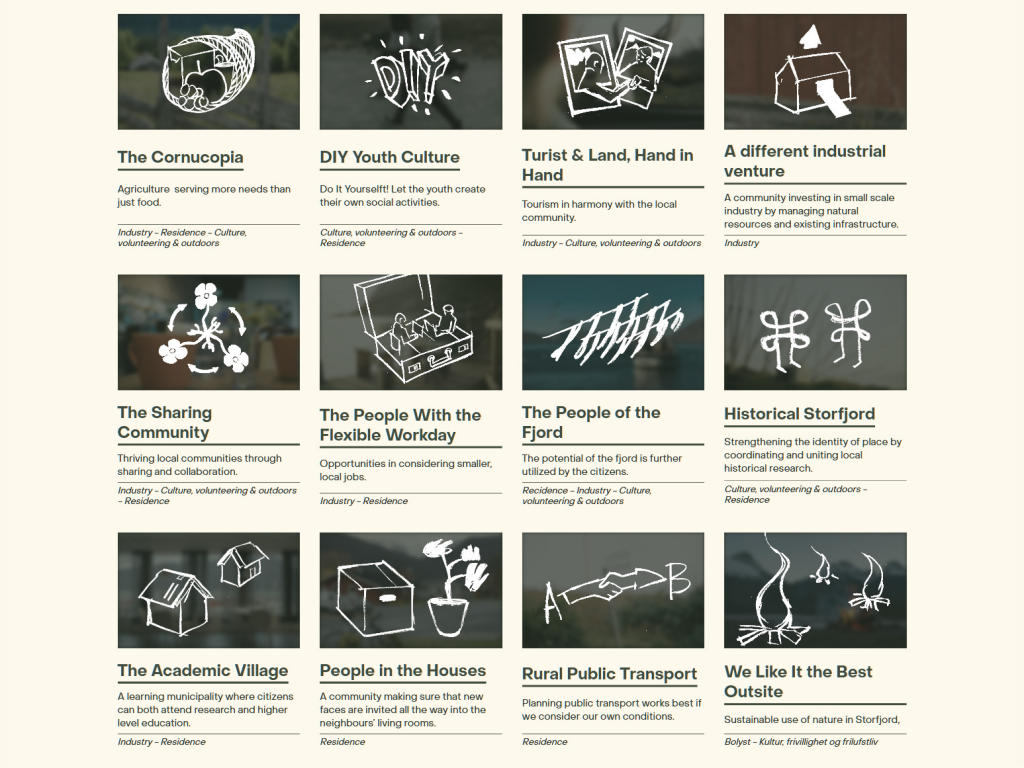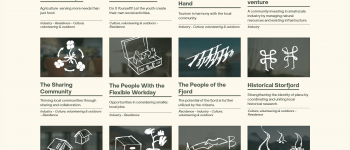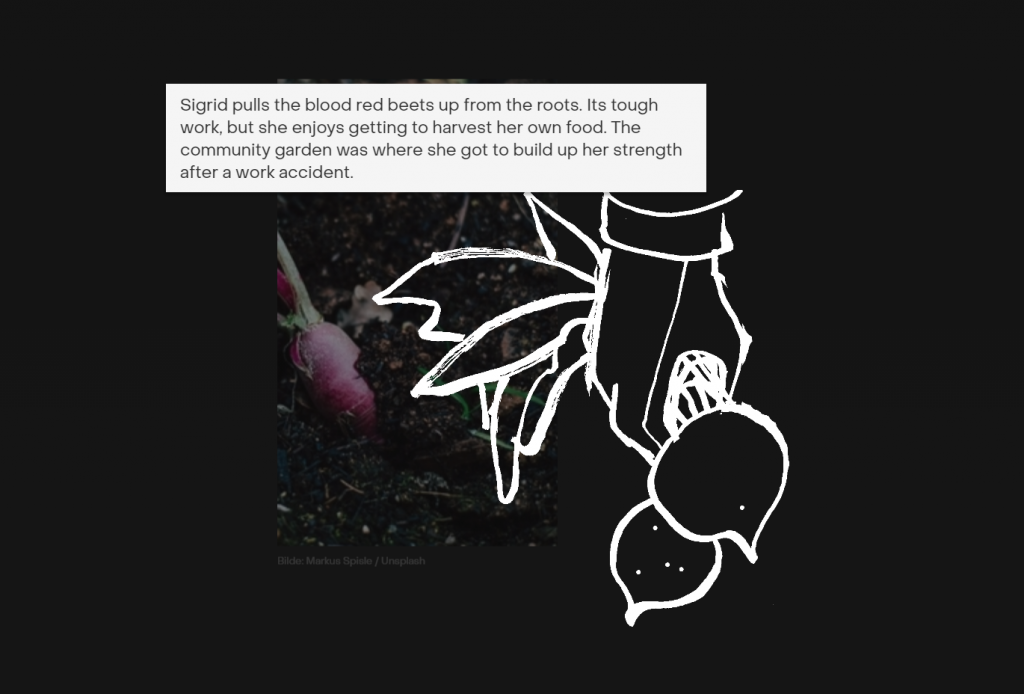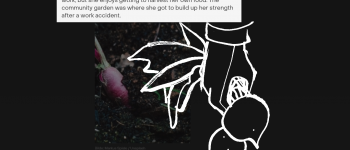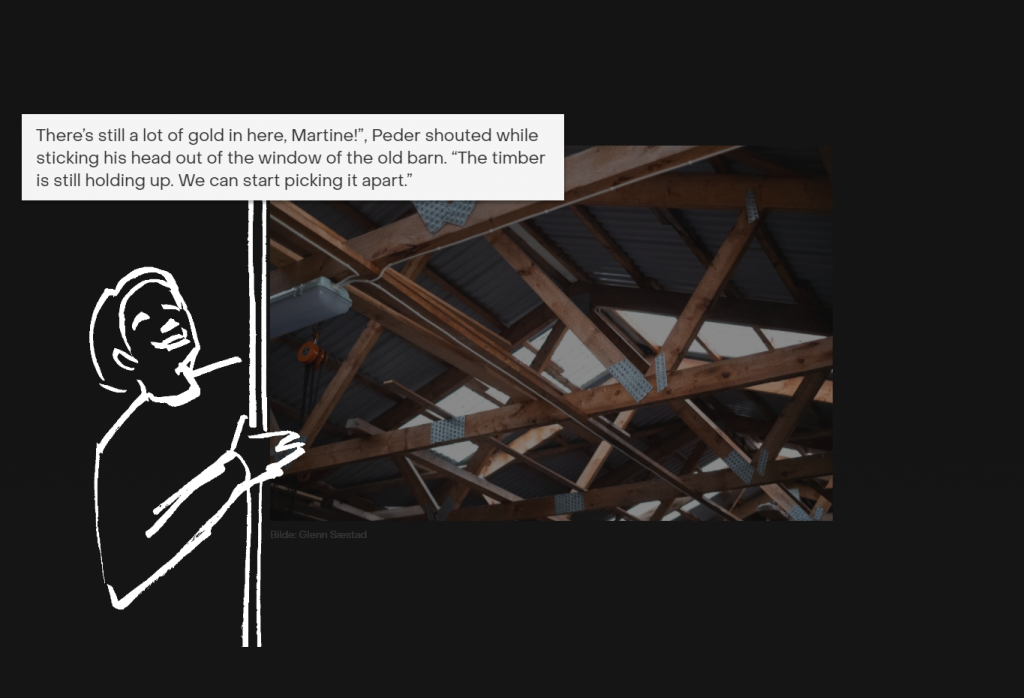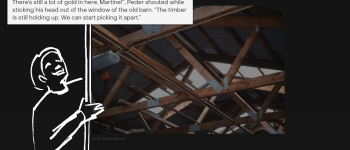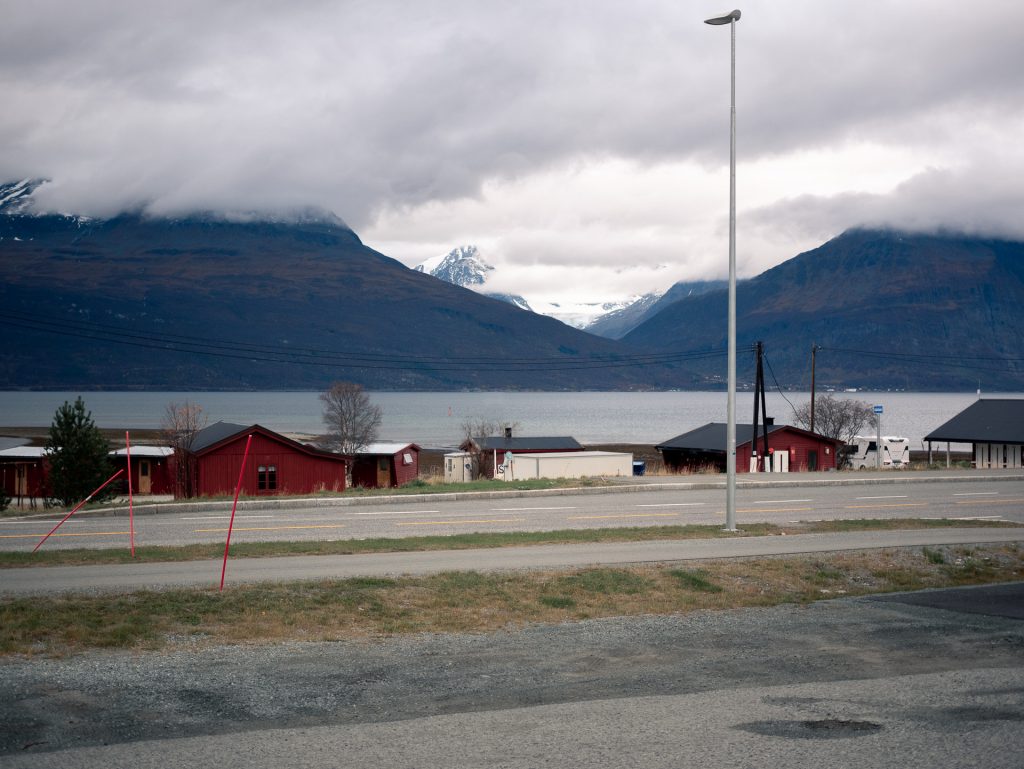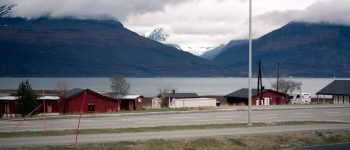Storfjord Plus addresses the question of how designers best can contribute to society wide transitions towards sustainability. More specifically, it addresses how designers can facilitate co-creation of shared visions of future sustainable ways of life within a community, raising discussions of resilience, self sufficiency and collective action. The project is situated in Storfjord, a rural municipality in northern Norway. This is a community living near and in the wild nature, but is at risk of fading away due to young people moving away for educational, vocational and social opportunities in the cities. As such the project addresses if and how rural living can be redefined as a desirable, viable and sustainable way of life as an alternative to dense city life far removed from the wilderness. Visions of sustainable communities are often situated in urban contexts, so our project proposes that there is a need to also include the rural in the envisioning of futures.
Summary:
Storfjord Plus is a semester length master level student project by Nikolai Sabel, Ørjan Laxaa, Einar Lukerstuen and Glenn Sæstad at The Oslo School of Architecture and Design. The project explores what role designers can play in driving sustainable transitions and is the result of a studio course the students self programmed in the fall of 2020 called “Baby Steps – Learning to Walk the Talk Towards a Regenerative Future”. The full project can be viewed at www.storfjordpluss.no.
Our hypothesis is that there is a need for attractive and desirable visions for a sustainable future to both rally, inspire and lead new interventions. We believe designers can fill the role as facilitators and accelerators through structured creativity and visual skills. Theoretically, the project is situated between the fields of transition design, regenerative economics and transition theory, in this case the “Multi Level Perspective on Sustainable Transitions”.
To test out our hypothesis in action, we have conducted a collective visioning process together with the local community in Storfjord municipality in northern Norway. Over the course of a week-long open vision workshop we had 42 eager citizens and stakeholders discuss what they appreciate about Storfjord today, the challenges Storfjord is facing, what they dream about for the future and what could be done about all this already today. This workshop was the foundation for a design process where we students processed and refined the thoughts and ideas into a portfolio of twelve visions for more sustainable ways of life in future Storfjord. These visions included stories of everyday life in the vision scenarios, concept proposals and suggested initiatives actionable today. Along the process we involved previous workshop participants in discussing the visions to collect feedback and continuously make adjustments. The resulting vision portfolio was made accessible to the public through a website (www.storfjordpluss.no) and a local exhibition, both mediums giving visitors the option to comment, discuss and organize in participating in the further work with one or more of the visions. The visions have both created informal and grass roots engagement within the citizens of Storfjord as well as been picked up and implemented by local politicians and business representatives. The design and realization processes of these visions are far from finished in this project alone. It demands sustained and reflective work over time, further exploring, learning about and redesigning the visions themselves and the way to realize them.
The project has three main deliverables: The first is of course the portfolio of twelve visions for the community of Storfjord, delivered as both a website and an exhibition. The second part is the reflective process itself that the 42 participants have been a part of, inspiring them to continue reimagining new and more sustainable opportunities in Storjord and how they could be realized. The third deliverable is an exploration of new ways of organizing citizens’ involvement in local democratic processes through a designerly practice towards sustainable transitions. Through this last lens the project is in itself a deliverable in the form of a methodological prototype for a co-creative visioning process including tools and insights we have made along the way.
The vision portfolio consists of twelve visions: 1. The Cornucopia (regenerative farming); 2. DIY Youth Culture (grassroots youth activities); 3. Tourist & Land, Hand in Hand (regenerative tourism); 4. A Different Industrial Venture (local small scale production using existing resources); 5. The Sharing Community (reducing material needs and expanding service offerings through shared use); 6. The People With the Flexible Workday (low cost of living and reduced hour positions as an opportunity for relaxed and low consumption living); 7. The People of the Fjord (responsible use of the fjord for social and economic benefits); 8. Historical Storfjord (making use of rich local history as unique identity of place),; 9. The Academic Village (building local opportunities for higher education and research); 10. People In the Houses (user centered approach to recruiting new residents); 11. Rural Public Transport (developing unique public transport services suited for rural conditions, not simply importing urban solutions); 12. We Like It the Best Outside (responsible use of the wild as natural resources for social and activities).
Background:
To be able to tackle the issues of a decreasing population, lacking job and social opportunities and unsustainable ways of life in a systemic and impactful way, we structured the project’s process and deliverables around implementing theories of change and ecological economics into design and collective action.
Transition design theorists Terry Irwin and Cameron Tonkinwise advocate that designers need to have a high level and long term theory of change to steer their design practice towards the most impact. Our designerly theory of change is derived from the model called “Multi Level Perspective” (MLP) developed by transition researchers Frank Geels and Johan Schott. It proposes that the established systems, called regimes, are sticky and ridgid. One actor thus can’t transform the system alone, but must build a network with other actors, suitable to overthrow the old system when the right moment arises. While one has to consider this model in at least a 70 year perspective and that society is always “in transition”, the model highlights the need for visioning processes to not only align professional actors, but also to influence the collective beliefs and ideas supporting the dominant regime.
The project’s approach was deeply influenced by the transition design framework, an outline of how designers can operationalize and work within a theory of change such as MLP. Proposed by Terry Irvin, Gideon Kossoff, Cameron Tonkinwise and Peter Scupelli, the abstract framework sketches out transition design as (A) working with and from visions, (B) informed by theories of change, (C) having an open and self reflecting posture and mindset, and (D) developing new ways of designing informed by place based knowledge, grass roots involvement and systems thinking. This project is thus structured around exploring new tactical ways of designing for and with visions informed by strategic theories of change and continuously reflecting on the process, practice and experiences underway.
Visions are conceptual devices employed by a variety of disciplines for a variety of purposes. In this project we have the term “tiny visions” taking inspiration from Irwin, Tonkinwise, Manzini and Jégou’s writings on vision oriented design. We see these visions in opposition to grand, all encompassing and one size fits all visions from a bird’s eye view. Thus, tiny in scale regards geographic and cultural coverage, level of perspective, ratio of predetermination to free play and capacity for action by relevant communities. We consider tiny visions more imaginative and innovative than most grand visions, withstanding easy ploys such as “largest”, “fastest”, “shiniest” and “most technical”, opting for seeing the innovative and productive in the everyday and existing conditions. This means that the visions can and should be within the capacity of everyday people, not excluding them in favour of the rich and powerful. Tiny visions also afford “modularity”, meaning that multiple visions can coexist, reflecting real life diversity of cultures, world views and experiences. If a grand vision fails, it must be discarded and rebuilt from the ground up. If a tiny vision fails, the totality remains and new tiny visions can take its place. This tinyness and modularity means that the visions can be continuously redeveloped by the community as they learn to transition towards sustainability.
To supplement the “how” of a transition with “where”, we have brought in the sustainable development goals and theories of ecological economics and ecosophy to serve as guiding principles and inspiration for the development of the 12 visions imagined together with the community of Storfjord. Specifically we have assembled principles of a holistic view of value and the economy from the writings of economists Kate Raworth, Ove Jacobsen and John Fullerton, and permaculture theorists Wendell Berry, Ethan Roland and Gregory Landua, surpassing solely financial capital in the private market. This means also including social, cultural, spiritual, natural, material, intellectual and living capital created in the public sector, household and the commons.
Process:
The project’s process was structured in five consecutive, but slightly overlapping activities: (A) a week-long open visioning workshop and field research with citizens of Storfjord, (B) , sorting, processing and analysis of the gathered materials from “A”, (C) generating, exploring and detailing of designed visions, called vision work, (D) parallel feedback from previous workshop participants, and (E) launch of the vision portfolio to the general public through a website and an exhibition. This process is an adaptation of the “Ethnographic Experiential Futures” framework developed by futurists and designers Stuart Candy and Kelly Kornet.
Building on the transition design framework and our intention of facilitating a collective visioning process, we conducted a week-long, open and drop in vision workshop in two central locations in Storfjord. The objective of the workshop was to gather enough information about the current situation and the communities dreams for the future to be able to sketch contextual, desirable and actionable visions further on in the process. These qualities all require a thorough understanding about local conditions, communities and culture. It was also important that this workshop would be the starting point of a longer engagement and dialogue with the local community both during the project’s duration and after. The workshop was structured as a set of reflective questions spread on different tables that the participants completed in their own tempo. The questions could be answered alone by a single participant or as a group of participants with or without the help of us as dialogue partners. The answers for each question were written on post it notes and placed on the respective question’s table so that later participants could be inspired by, respond to and build on previous answers. Along the way we discussed the participants’ notes with them, reflecting on the what, why and how to make sure we fully understood the contexts of the answers. This also let us bring up topics and concerns previous participants had expressed, mediating the views of different stakeholders over time. The main output of this workshop used in the following vision work were the conversations held and stories told around the notes. In this way, the notes acted more as documentation, memory aids and artifacts for sorting and clustering analysis.
The workshop questions were: (A) What do you appreciate and value with how Storfjord is today? (B) What are the challenges Storfjord is facing today and will be facing in the future? (C) What do you dream about for the future of Storfjord? (D) What exists in Storfjord today that can act as seeds for realizing the dreams discussed in “C”? (E) What capacities do you hold to realize change in Storfjord and what would you like to promise yourself and your community to do? (F) Sum up your most important thoughts on the sides of a precut wooden block to build a symbolic vision cairn or beacon. The workshop setup also included a big 4m by 4m map of Storfjord placed in the middle for participants to place location specific notes onto. The structure of the workshop is a synthesis of the workshop frameworks Thee Horizons by Bill Sharpe and more, and World Cafe as described by Lyn Carson, adapted to be as accommodating for participation by everyone independent of available time, previous knowledge or skills. In total we had 42 participants, equaling 2.25% of the population of Storfjord, participating between 30 minutes and 3 hours. The participants represented youths (from 13 year olds), to the elderly (over 80 year olds), Norwegian, Sami and Kven cultures, local business and industry, land owners, politicians and public sector employees. Several participants expressed that the workshop was a new and exciting way to participate in local democracy and planning processes, very different from typical town hall and political meetings.
After the workshop we moved all of the workshop materials to our studio space for analysis. After an initial debriefing session to share impressions and stories, all notes were sorted into clusters within the answers to each question. The notes and clusters were discussed, reclustered and rediscussed to make sure that the topics both represented the overall concerns expressed in the workshop and uncovered new relations and insights in the data. As such, the clusters represented important topics and insights and acted as anchoring points for the following visioning work to be context specific in terms of local issues, value, dreams and starting points. The analysis process in itself also helped us internalise the findings and start coming up with vision ideas based on expressed dreams, issues and so on.
We define vision work as using design and creative thinking to translate material and insights from the co-creative workshop into both early and refined sketches for context specific visions systemically transcending individual concerns, issues and needs. This was structured by synthesizing and creatively imagining the insights from the analysis and filling in the ideas in a vision worksheet created for the project. The worksheet covered the main areas a vision needed to address: (A) A narrative description of the vision, (B) the issues addressed, (C) the local value preserved, (D) concepts and services the vision could entail, (E) existing seeds and starting points for the vision, and (F) interventions that could be implemented today. This worksheet enabled us to both collaborate and work independently as designers comparing, combining, redesigning and iterating the visions to make sure that they addressed multiple issues and opportunities in a systemic, innovative and desirable way. Combined with web based sketching tools, this approach enabled us to adapt our working environment to changing Covid-19 guidelines and restrictions in Norway throughout the fall. During this process the vision portfolio was strategically concentrated from 34 vision ideas into 16 vision sketches and further focused into 12 visions including three to four sub-concepts each. These concepts were sparsely described with only a title and an explanatory sentence in order to simply suggest and not overshadow the overarching vision itself.
As we worked on selecting, iterating and detailing these visions, previous workshop participants were involved in giving feedback on the visions: their form, contents and style. At this point, the visions were presented in an early version of the final project website, containing a general description, the related insights and suggestive concepts for each vision. We discussed the portfolio, it’s strengths and weaknesses, one on one with each participant to understand how the general population in Storfjord might receive it. These feedback sessions led to some visions being removed or redesigned, the tone of voice being adjusted for more clear communication and accompanying images being adjusted to better suit the local context. These digital feedback sessions were thus crucial to make sure that the visions kept to its place based roots and local conditions. In general, all participants were excited about recognizing content from the workshop in the vision portfolio and seeing new imaginative connections between local issues and opportunities.
The final vision portfolio consisted of twelve tiny visions: 1. The Cornucopia (regenerative farming); 2. DIY Youth Culture (grassroots youth activities); 3. Tourist & Land, Hand in Hand (regenerative tourism); 4. A Different Industrial Venture (local small scale production using existing resources); 5. The Sharing Community (reducing material needs and expanding service offerings through shared use); 6. The People With the Flexible Workday (low cost of living and reduced hour positions as an opportunity for relaxed and low consumption living); 7. The People of the Fjord (responsible use of the fjord for social and economic benefits); 8. Historical Storfjord (making use of rich local history as unique identity of place),; 9. The Academic Village (building local opportunities for higher education and research); 10. People In the Houses (user centered approach to recruiting new residents); 11. Rural Public Transport (developing unique public transport services suited for rural conditions, not simply importing urban solutions); 12. We Like It the Best Outside (responsible use of the wild as natural resources for social and activities).
Each vision was described in eight subsections: 1. A personal and visual story about everyday life in this vision; 2. A general description of the vision; 3. Workshop insights addressed by the vision; 4. A selection of actual post-it notes written in the workshop; 5. Service concepts the vision could entail; 6. Interventions from public and private sector, citizens and NGOs that could start realizing the vision; 7. Sustainable principles incorporated in the vision presented in a “nested economy” model; 8. Examples and case studies evidencing that parts of the vision already exist in some way or another. Section 7 and 8 also included disclaimers that further work and research is needed to validate these hypotheses.
The guiding principle behind the visions’ structure was to make the visions as easily digestible as possible. This is why the visions are first presented from a personal and narrative point of view, focusing on emotional and desirable experiences of the vision. As the reader progresses through the vision descriptions, more details and rational, collective and environmental arguments are introduced. This principle stems from a personal reflection during the project, that many sustainable options and solutions are presented from first and foremost solidaric and rational points of views toward the planet and humanity. As regenerative theorists propose that sustainable transitions could and should lead to better quality of life for all, we believe that sustainable interventions should focus on motivating personal change through calls to the personal, emotional and in some way hedonistic nature of people’s consciousness.
Results:
The project and portfolio was released to the public through a website (www.storfjordpluss.no) and a small exhibition in Storfjord. The website was promoted through local Facebook groups and a Facebook event for the local exhibition a few days before the exhibition itself. The website was first published with just an introductory page and the twelve visions, while the project report describing the process was added a week after. The website also included a signup form for people to register their interest in contributing to the further work with one or more visions.
While the website will be accessible from anywhere at any time past the project end, we saw it as crucial to facilitate some sort of face to face meeting to discuss the visions. To accommodate Covid-19 guidelines and promote social distancing, the exhibition was organized with long opening hours and no fixed programme or talks. People could come when they wanted, have a chat with one of the present students and study the printed vision posters themselves. The exhibition also included a sign up form for people interested in further participation. Initial reactions from the public was positive, with visitors appreciating how the visions seemed new and imaginative, but also actionable today. Concepts and initiatives involving both public and private sector, citizens and charity meant that all actors could start imagining their role in realizing the different visions. This model also mirrored the municipality’s own efforts into co-creation and -production of services towards a sustainable transition.
We would like to note that the work is far from over even if the project formally is concluded. The visions themselves need to be further developed, detailed and tested through prototypes and initial interventions. This realization process will surely uncover new insights about both the context of Storfjord and the vision itself. This could be seen as an iterative and dialectic process between realization and redesign of the visions. Several stakeholders have expressed a wish for continuing the work themselves and together with us. Local politicians and local planners are eager to discuss the way forward and how to secure funding for this. As soon to be professional designers, we see this as an opportunity to develop a practice oriented towards sustainable transitions, especially in the rural areas, together with local communities and stakeholders.
Using systems thinking and systems oriented design, we view these three issues as interconnected and wicked (e.g. sustainable jobs creation in Storfjord being hindered by lack of new knowledge and competencies due to young people seeking education and settling in the cities, having limited job opportunities and social infrastructure in their hometown). These issues must thus be addressed holistically, both in terms of the issues themselves and the people involved.
Building on transition studies, ecological economics, transition design and social innovation theory, we have approached the issues as a group of four design students (some with place based knowledge and awareness, others with fresh eyes and outside perspectives) as facilitators and provokers. Our aim is to help the local community investigate and explore their own context, issues and potential interventions, with us bringing in designerly competencies (e.g. abstract and conceptual thinking, innovation process planning and imaginative visualization), reflecting the community’s thoughts and ideas back on itself for further reflection and imagination. This has been put to practice through co-creation and discussion of human scale, modular, place based and actionable visions. Combining insider place based knowledge and outsider perspectives and ideas has led us and the local community to reconsider the core values of Storfjord’s past, present and future: what are the needs, what should be sustained and how could solutions be reimagined to fit both sustainable ways of life and local historical conditions.
